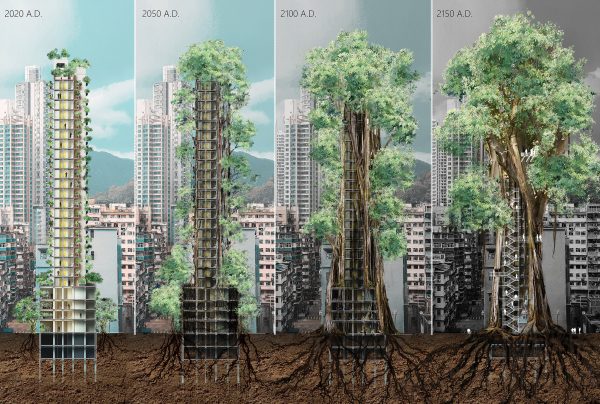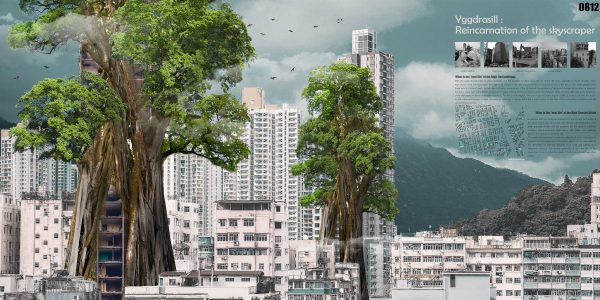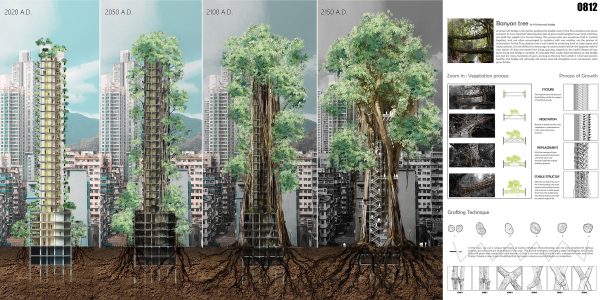Editors’ Choice
2020 Skyscraper Competition
Shulong Ren, Hongrui Lai, Chang Liu
China
With the rapid development of the global economy and the increase of urban population in the recent 100 years, especially in recent decades, many high-density areas with skyscrapers have appeared in most cities around the world. Hong Kong is one of the typical. But with the continuous development of the city and with the problems of aging and disrepair of structures or backward functions., many high-rise buildings are facing the reality of being demolished and reconstructed. However, there are many difficulties in the demolition of skyscrapers in dense urban areas nowadays. The first is technological, the cost is a high and heavy degree of difficulty. Besides, the impact on the urban environment is large, the waste of resources is serious and it has a great impact on the lives of the surrounding population and the surrounding economy.
In addition, with the continuous expansion of the city and the transfer of the urban central area, these iconic high-density high-rise building urban areas gradually decline with the problems like the aging of buildings, outdated infrastructure, and other issues. These areas lost their vitality and gradually become the backward side of the city. This project discusses how to solve this dilemma of urban skyscrapers at present from the perspective of the future, search out the new extent to the demolition of high-rise buildings in a small and narrow area. Meanwhile trying to find another possibility of the “next life” of the skyscrapers so as to reduce the waste of resources and build new urban vitality. A living root bridge is a type of simple suspension bridge formed of living plant roots by tree shaping. They are common in the southern part of the Northeast Indian state of Meghalaya. With the concept of Baobotanik, it is hoped that high-rise buildings in the face of demolition can extend the power of nature in the city.
This is a long process, and the work has already begun before the building is far from being demolished. First of all, when the building is still in normal use, plants such as banyan trees are planted in various positions of the building, so as to prepare for the elimination of the building without listening. Banyan trees play an important role in the reconstruction of the ecosystem, with the characteristics of strangulation. As time goes on, banyan trees will grow with the frame structure of the original building as support and guidance. After a certain period of growth, these plants are intertwined and then grafted through human intervention. The plants form a relatively stable new structural system, and part of them invade the original structure. And replace the original building structure.
When the building should be demolished and the original structural system of the building loses its function, the plant structure will rely on the original structure to become the new main supporting structure takes a long time for high-rise buildings to transform seamlessly from the old function and structure to the new function and structure. At the same time, with the transformation of buildings, the urban area can be activated and the original negative area can be transformed. This scheme is not only applicable to Hong Kong, but also to many cities in the world. When the high-density area of the city is gradually eliminated and a skyscraper version inner city is formed, the life of high-rise buildings could continue by ecological means. When the high-rise buildings are faced with demolition, they can return to nature, restore the urban ecology and obtain permanently sustainable development.

















